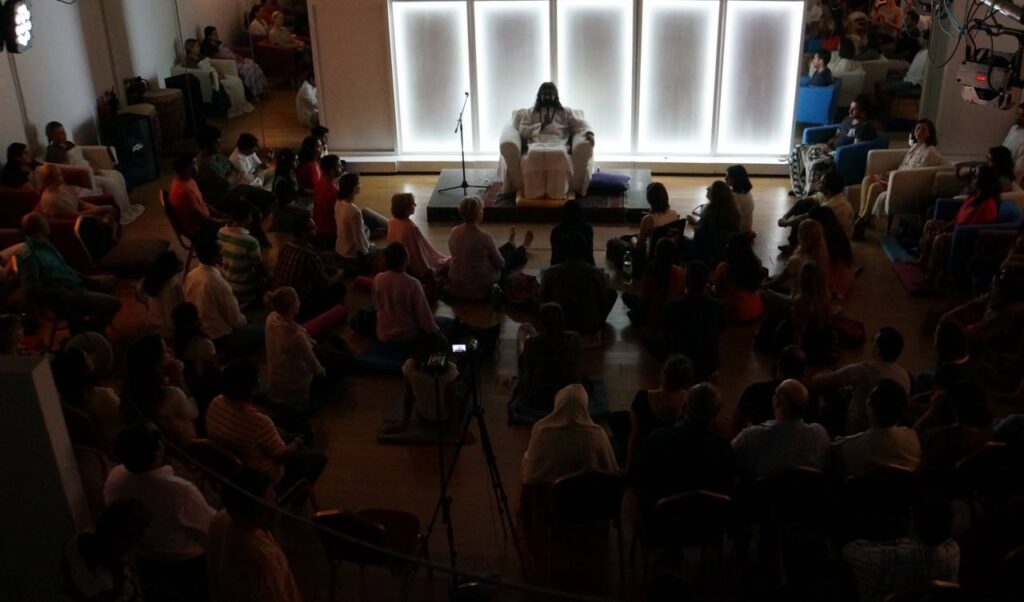Introduction
In the hustle and bustle of modern life, finding moments of stillness can be challenging.Mohanji Gap Between Breaths, Our minds are constantly racing, and our bodies often mirror this restlessness. Mohanji, a renowned spiritual leader, offers a simple yet profound technique to cultivate inner peace: focusing on the gap between breaths. This article explores Mohanji’s teachings on the gap between breaths, its significance, and how to incorporate this practice into daily life.
Understanding the Gap Between Breaths
Mohanji teaches that the gap between breaths – the brief pause between inhalation and exhalation – is a doorway to stillness and inner peace. This gap, though fleeting, holds immense potential for grounding oneself and connecting with the present moment. By becoming aware of and focusing on this gap, we can access a deeper state of consciousness and tranquility.
The Significance of the Gap
1. Natural Pause
The gap between breaths is a natural pause that occurs without any conscious effort.Mohanji Gap Between Breaths.It is a moment of stillness that offers a break from the constant inflow and outflow of air. Recognizing this pause can help us become more attuned to our body’s natural rhythms.
2. Gateway to Presence
Focusing on the gap between breaths brings our attention to the present moment. This practice helps quiet the mind and reduces distractions, allowing us to experience a sense of calm and clarity. Being present is essential for cultivating mindfulness and reducing stress.
3. Connection to the Subconscious
Mohanji Gap Between Breaths explains that the gap between breaths is a bridge to the subconscious mind. By paying attention to this gap, we can tap into deeper layers of our consciousness, fostering self-awareness and inner peace.
The Science Behind the Breath
Modern science supports the benefits of breath awareness. Studies have shown that mindful breathing can activate the parasympathetic nervous system, which is responsible for the body’s rest and digest functions. Mohanji Gap Between Breaths.This activation helps reduce stress, lower blood pressure, and promote overall well-being. The gap between breaths, as a focal point, can enhance these effects by deepening our connection to the breath.
Practical Steps to Focusing on the Gap Between Breaths
1. Find a Quiet Space
To begin this practice, find a quiet and comfortable space where you won’t be disturbed. Sit or lie down in a relaxed position.
2. Close Your Eyes
Close your eyes to minimize visual distractions and turn your attention inward.Mohanji Gap Between Breaths.
3. Start with Deep Breaths
Take a few deep breaths to relax your body and mind. Inhale deeply through your nose, hold for a moment, and exhale slowly through your mouth.
4. Observe Your Breath
Shift your focus to your natural breath. Observe the flow of air as it enters and leaves your nostrils. Notice the rise and fall of your chest or abdomen.
5. Notice the Gap
Pay attention to the brief pause between each inhalation and exhalation. This is the gap between breaths. Simply observe this gap without trying to control it.
6. Stay Present
Continue to focus on the gap between breaths for a few minutes. If your mind wanders, gently bring your attention back to your breath and the gap.
7. Gradually Increase Practice Time
Start with a few minutes each day and gradually increase the duration of your practice. Consistency is key to experiencing the benefits of this technique.
Benefits of Focusing on the Gap Between Breaths
1. Enhanced Mindfulness
By concentrating on the gap between breaths, we anchor ourselves in the present moment. This heightened state of mindfulness helps us navigate daily challenges with greater ease and awareness.
2. Reduced Stress and Anxiety
Mindful breathing, especially focusing on the gap between breaths, activates the body’s relaxation response. This reduces stress hormones and promotes a sense of calm and relaxation.
3. Improved Emotional Regulation
Regular practice of this technique can enhance emotional regulation. By observing the breath, we create a buffer between our emotions and reactions, allowing us to respond more calmly and thoughtfully.
4. Greater Self-Awareness
Focusing on the gap between breaths fosters self-awareness. We become more attuned to our thoughts, emotions, and bodily sensations, which is essential for personal growth and development.
5. Deepened Spiritual Connection
For those on a spiritual path, the gap between breaths can serve as a portal to deeper states of consciousness and spiritual awareness. It helps us connect with our inner selves and the universe.
Mohanji’s Teachings on Breath and Consciousness
Mohanji emphasizes that breath is a powerful tool for connecting with our true nature. He teaches that our breath reflects our mental and emotional state. By cultivating awareness of the breath, especially the gap between breaths, we can achieve a state of balance and harmony.
Incorporating the Practice into Daily Life
Integrating the practice of focusing on the gap between breaths into daily life can be transformative. Here are some practical tips:
1. Morning Routine
Start your day with a few minutes of breath awareness. This sets a calm and centered tone for the rest of the day.
2. Mindful Breaks
Take short breaks throughout the day to practice focusing on the gap between breaths. This can be done at your desk, during a walk, or while waiting in line.
3. Evening Reflection
End your day with a reflection on your breath. Notice how your breath changes throughout the day and how the practice has impacted your overall well-being.
4. Stressful Moments
In moments of stress or anxiety, take a few moments to focus on the gap between breaths. This can help calm your mind and body, allowing you to respond more effectively.
Stories of Transformation
Mohanji’s teachings on the gap between breaths have touched many lives. Here are a few stories of individuals who have found peace and clarity through this practice:
1. Sarah’s Journey to Calm
Sarah, a teacher, struggled with anxiety and stress due to her demanding job. By practicing breath awareness, she learned to stay present and calm, even in challenging situations. This practice improved her mental health and overall quality of life.
2. David’s Path to Mindfulness
David, a business executive, found it difficult to balance work and personal life. Through focusing on the gap between breaths, he achieved greater mindfulness and clarity. This transformation enhanced his productivity and personal relationships.
3. Emma’s Spiritual Awakening
Emma, a yoga instructor, deepened her spiritual practice by incorporating Mohanji’s teachings on breath awareness. This practice helped her connect with her inner self and experience a profound sense of peace and unity with the universe.
Challenges and How to Overcome Them
While the practice of focusing on the gap between breaths is simple, it can be challenging to maintain consistency. Here are some common challenges and tips to overcome them:
1. Restless Mind
A restless mind can make it difficult to focus on the breath. When this happens, gently bring your attention back to your breath without judgment. Persistence in practice will help calm the mind over time.
2. Lack of Time
Finding time for mindfulness practice can be challenging in a busy schedule. Start with just a few minutes each day and gradually increase the duration. Integrate the practice into daily activities, such as during a commute or while doing chores.
3. Physical Discomfort
Physical discomfort can distract from breath awareness. Ensure you are in a comfortable position and make any necessary adjustments. Practice relaxation techniques to ease tension in the body.
Conclusion
Mohanji’s teachings on the gap between breaths offer a powerful and accessible way to cultivate inner peace and mindfulness. By focusing on this brief pause, we can connect with the present moment, reduce stress, and enhance our overall well-being. This practice not only benefits our mental and emotional health but also deepens our spiritual connection. As we incorporate this technique into our daily lives, we move closer to a state of balance, harmony, and inner peace.



